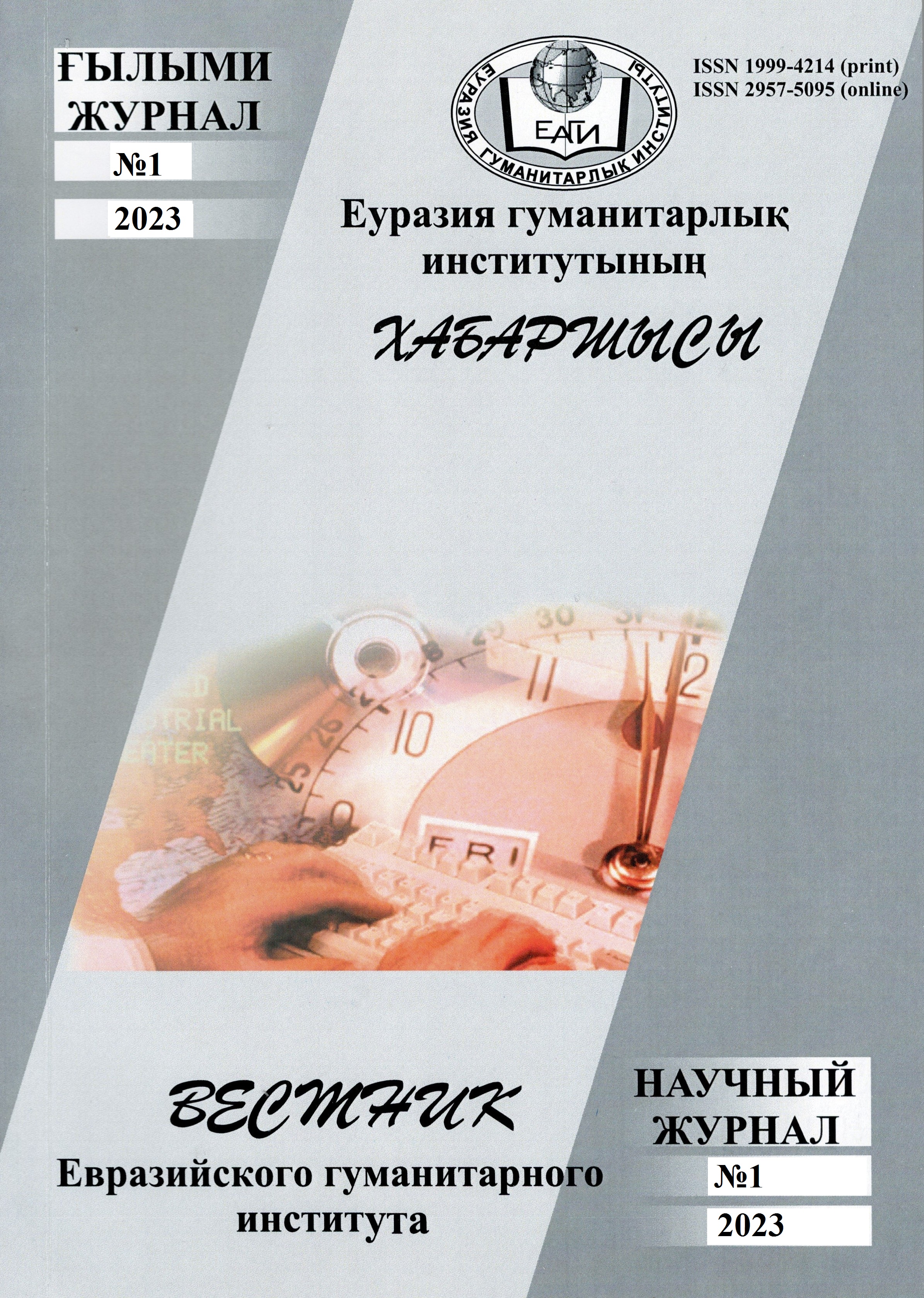УПОТРЕБЛЕНИЕ СЛОВОЛСОЧЕТАНИИ В КАЗАХСКОМ ЯЗЫКЕ В СЛОВАРЕ АЗ-ЗАМАXШАРИ "МУКАДДИМАТ- АЛЬ-АДАБ"
Ключевые слова:
Аз-Замахшари, «Мукаддимат аль-Адаб», тюркский словарь, тюркология, казахский язык, словосочетание.Аннотация
Аз-Замахшари – историк, географ, литературовед, лингвист, педагог и известный поэт для своего времени. Он оставил труды по логике, грамматике, религии, литературе, литературоведению, педагогике, истории и географии.
Одним из его заметных трудов является работа «Мукаддимат аль-Адаб». В этой статье рассказывается о структуре фраз из произведения Аз-Замахшари «Мукаддимат аль-Адаб». Рукопись уникального в мире четырехъязычного арабо-тюрко-монгольского произведения в настоящее время хранится в Литературном музее имени Алишера Навои в Ташкенте.
По словам исследователей, тюркский отдел гуламы «Мукаддимат аль-Адаб», охватывающий арабо-персидско-турецко-монгольский язык, не завершен. Словарь отличается от современных двуязычных словарей тем, что, во-первых, он затрагивает несколько языков, а во-вторых, создает не только перечень слов, но и объединяет их в словосочетания. В этой статье рассказывается о фразах из словаря «Мукаддимат аль-Адаб», показаны их структуры передачи и сходство со словосочетаниями современного казахского языка. В словаре словосочетания представлены через корневую ячейку, это соответствует структуре словарей, созданных в период мусульманской цивилизации. В большинстве словарей средневековья слова и фразы строились с использованием ячеек (моделей), похожих на фонетическую структуру арабского языка. Сначала указывается корень слова, а после этого дается фраза, образованная из этого слова. Слова и фразы выстроены в зависимости от формы слова. Словарь также содержит регулярные выражения, но в их переводах наблюдается несоответствие в переводе. Словосочетания, составленные в рамках одного слова, собраны в одну группу. В статье также указываются фразы из словарей. Материал, собранный в этой статье, упоминается как общая характеристика словосочетаний в словаре. В будущем планируется рассмотреть их сквозь призму фонетико-морфологического аспекта.


